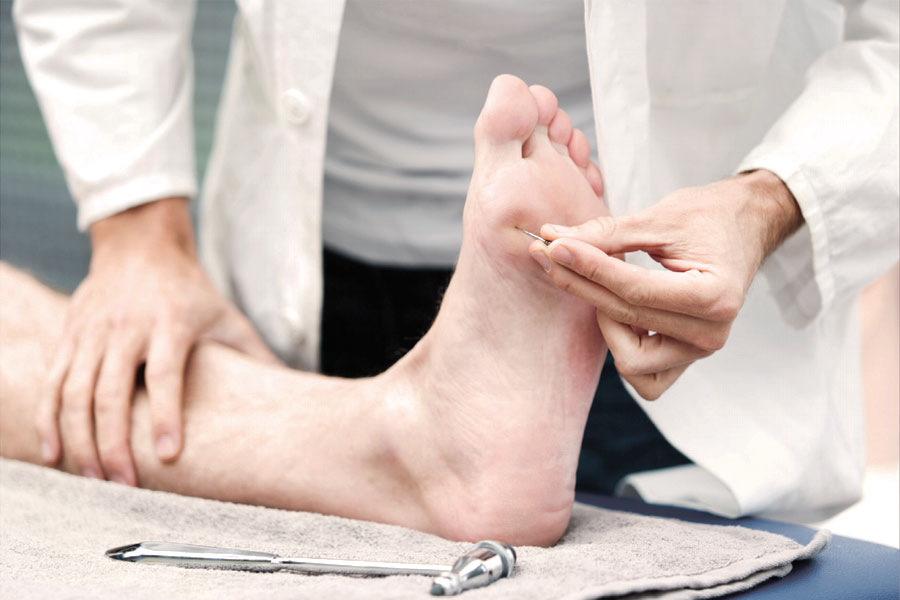A ‘high-risk’ patient is one that suffers from various medical conditions that can reduce their healing potential or increases the risk of infection, necrosis and ulceration (wounds). Most common high-risk causing conditions include, Diabetes, heart disease and neurological disease.
The role of a Podiatrist for a high-risk patient is to minimize, eliminate and prevent serious complications that can possibly cause infection/necrosis. If the infection is severe and beyond help, then ultimately, amputation of the area is a necessity to preserve life.
Complications
- Neurological : nerve damage – resulting in numbness, and affecting limb movement
- Vision: blindness
- Increased risk of in infections
- Increased risk of heart attack
- Kidney damage and increased risk of kidney failure
Prevention of Complications
- Consult with a Podiatrist for a full history and neurovascular assessment
- Keep feet clean and dry
- DO NOT walk barefoot especially on the hot sand on the beach
- Wear safer shoes to protect the foot.
- Check for foreign objects inside your socks and shoes before wearing – e.g. pebbles, dog hair, spiders (!)
- Check the feet after a shower for any blood, bruises, scabs
A Podiatrist’s Biggest Concern
The major concern for a Podiatrist when it comes to a High-Risk Diabetic patients is lower limb amputation. This occurs when a person who has uncontrolled Diabetes Mellitus with the complications listed above has nerve damage. If the lower limb to foot nerves are damaged then feet will be numb or sensation to stimuli would not be 100% as would for a healthy individual. Hence, blisters, sores would not be felt on the numb areas of the foot because the Diabetic does not feel the pressure or injury.
If these blisters and sores are unnoticed and continue to be dealt with more pressure than the areas will proceed to become an ulcer, a penetrating wound and if that is still unnoticed, then infection will set in and the longer it goes without direct treatment, then the infection will spread, killing off tissue which will lead to gangrene. If the gangrenous limb cannot be saved then amputation is completed immediately to preserve life.
Other Nerve damage symptoms
- tingling, or pain in the toes, feet, legs, hands, arms, and fingers
- wasting of the muscles of the feet or hands
- indigestion, nausea, or vomiting
- diarrhea or constipation
- dizziness/light-headedness due to a drop in blood pressure after standing or sitting up
- problems with urination
- erectile dysfunction in men or vaginal dryness in women
- general weakness
Message
MONITOR YOUR FEET! CONTROL DIABETES!

Grant Duong, Podiatry
At the Triumph Institute located in the heart of Bankstown, Sydney we also practice podiatry. It’s a medical field that specialises in the prevention, diagnosis, treatment and rehabilitation of problems and issues that affect the lower limbs, from the lower back right down to our feet.


